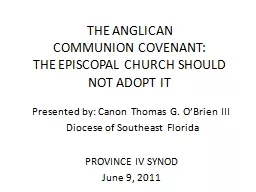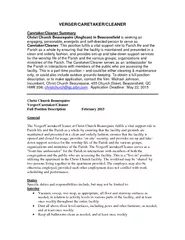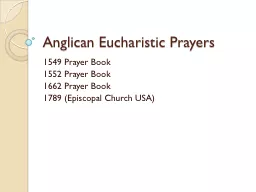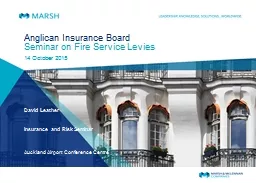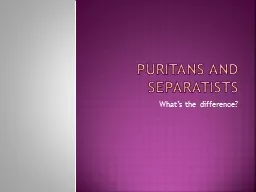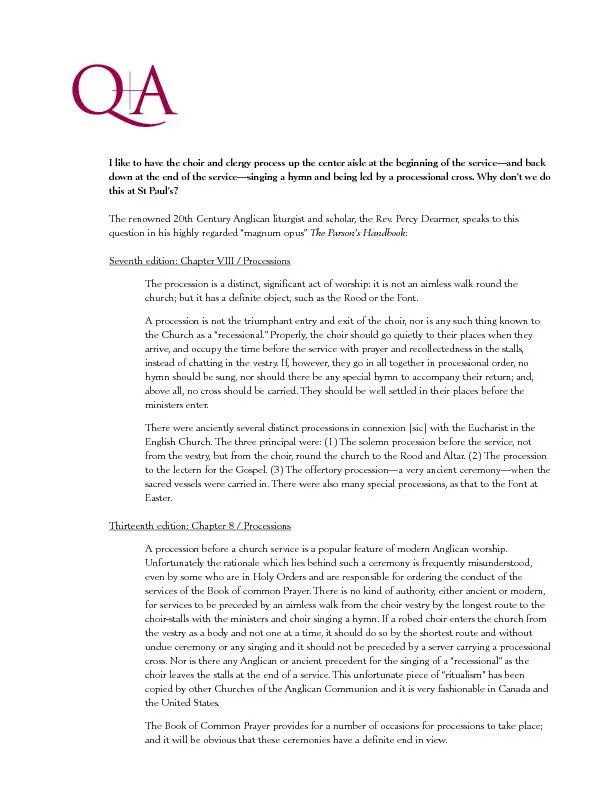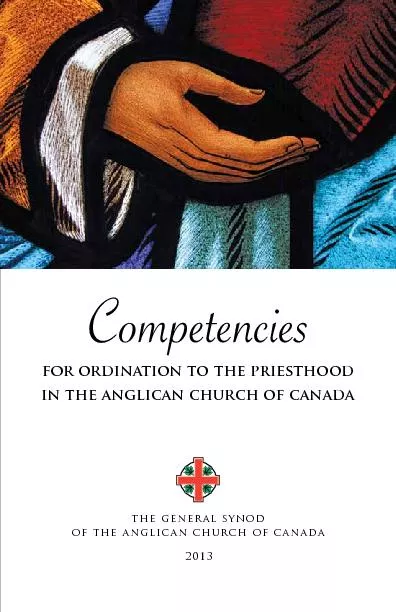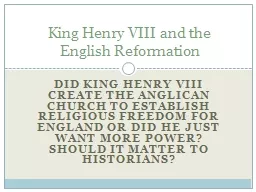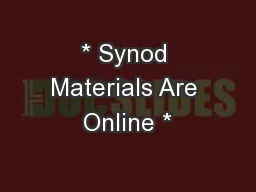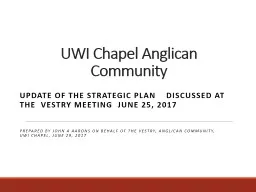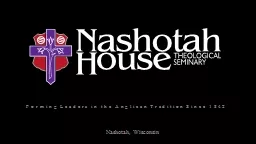PPT-THE ANGLICAN
Author : alida-meadow | Published Date : 2016-04-07
COMMUNION COVENANT THE EPISCOPAL CHURCH SHOULD NOT ADOPT IT Presented by Canon Thomas G OBrien III Diocese of Southeast Florida PROVINCE IV SYNOD June 9 2011
Presentation Embed Code
Download Presentation
Download Presentation The PPT/PDF document "THE ANGLICAN" is the property of its rightful owner. Permission is granted to download and print the materials on this website for personal, non-commercial use only, and to display it on your personal computer provided you do not modify the materials and that you retain all copyright notices contained in the materials. By downloading content from our website, you accept the terms of this agreement.
THE ANGLICAN: Transcript
Download Rules Of Document
"THE ANGLICAN"The content belongs to its owner. You may download and print it for personal use, without modification, and keep all copyright notices. By downloading, you agree to these terms.
Related Documents

